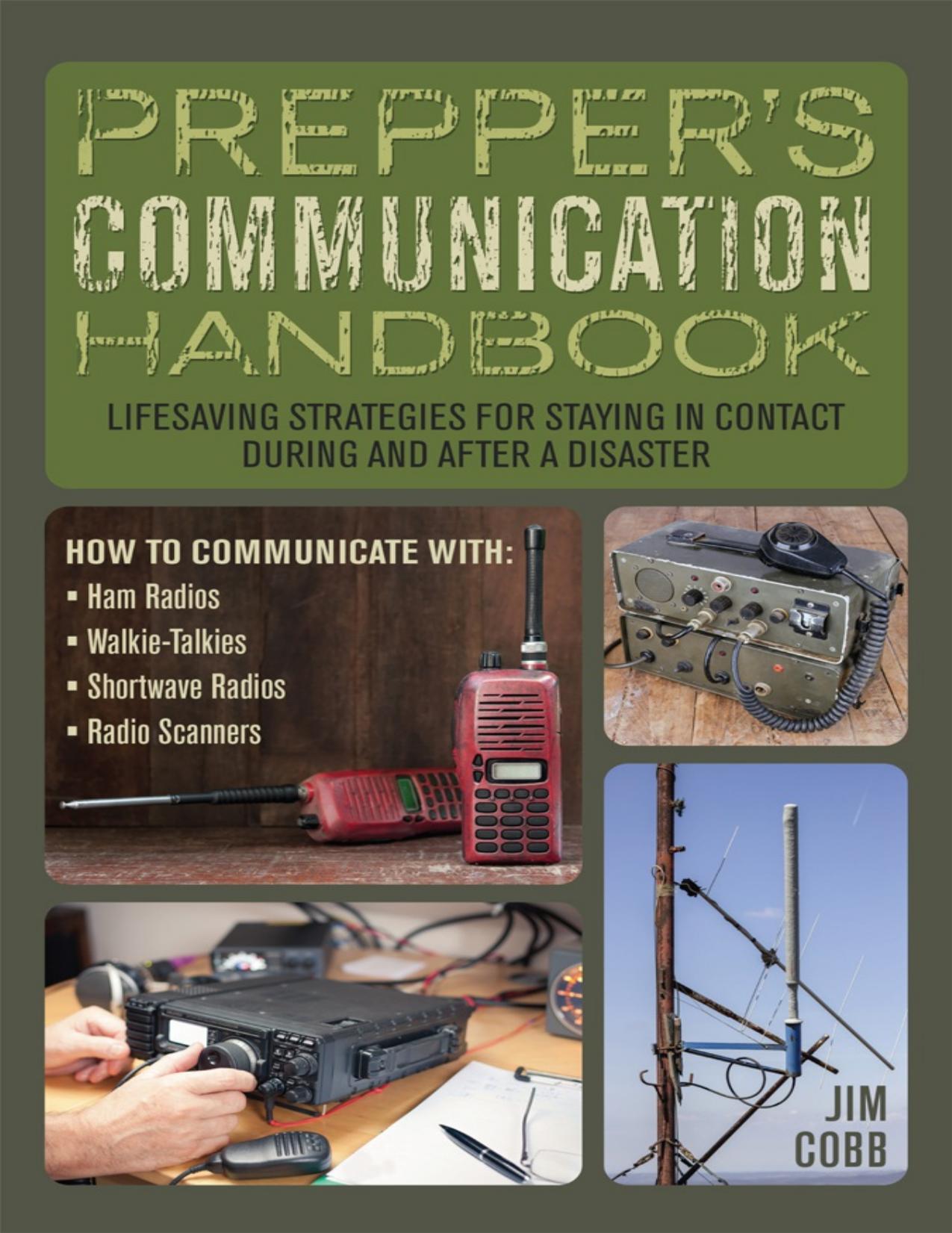Prepper's Communication Handbook by Jim Cobb

Author:Jim Cobb
Language: eng
Format: epub, pdf
ISBN: 9781612435398
Publisher: Ulysses Press
Published: 2016-01-19T05:00:00+00:00
Baofeng UV-5R Ham Radio
This transmitter is very popular among preppers for its small size and inexpensive price. It is an excellent option for the bug out bag as well as for home use.
If your primary concern is gathering information, a standard emergency radio that runs on either batteries or crank power will suffice. Most of the ones sold today will tune in AM/FM and NOAA weather broadcasts. Some of the nicer ones will also bring in shortwave transmissions. The Kaito Voyager Pro is one of the best on the market today and will handle all of those transmissions, plus it adds solar power to the mix.
For two-way communication, it is hard to beat a small handheld ham transmitter/receiver, or transceiver. The Baofeng UV-5R is very popular among preppers due to the small size and wide range of capabilities. It takes some effort to get it programmed properly, though. My advice is to invest in the proper programming cable so you can program the radio using a free downloadable program called CHIRP.
Be sure to keep spare batteries in your bug out bag, ideally one full set for each radio or other device you’ll be carrying. You might also consider picking up a portable solar panel. They have really come down in price recently and are rather affordable. Many of them fold up into a size not much larger than a spiral notebook, though around an inch or two thick. You can use the solar panel to charge not only your cell phone or tablet but a set of batteries, too.
EXPECT IT TO BE COMPLICATED
When I was in school, one of the only computer languages being taught at the middle and high school levels was BASIC, which stands for Beginner’s All-Purpose Symbolic Instruction Code. It was, well, pretty basic in that much of it was written in very simple terms. The instruction to print, for example, was “Print.” One of the first types of commands you learn in BASIC is the conditional “If/Then” statement. Basically (no pun intended), if a specified condition were true, then the program performed a certain action. If the condition were not true, the program moved to the next step or sequence.
Your communication plan is going to be filled with If/Then conditional statements, even if they aren’t written in that format. For example:
IF Dad can’t be reached by telephone at work,
THEN send him a text.
IF text messages aren’t going through or there is no response,
THEN send him an email.
Obviously, this can get complicated quickly. That’s okay, and really, it is to be expected. There’s no way around it. As you acquire more and more means to communicate, there will be ever more steps in the communication plan. The PACE protocol alone specifies four distinct steps in the process, each of them very much If/Then conditions.
Complicated isn’t necessarily bad, provided you take the time to fully understand each step in the plan and ensure all involved know the parts they will play.
A SAMPLE PLAN
Let me put it all together to demonstrate how this works with the fictional Branson family.
Download
This site does not store any files on its server. We only index and link to content provided by other sites. Please contact the content providers to delete copyright contents if any and email us, we'll remove relevant links or contents immediately.
SAS Survival Handbook by John 'Lofty' Wiseman(2626)
Food and Water in an Emergency by Food & Water In An Emergency(2296)
The Splendid and the Vile by Erik Larson(2271)
Hidden Valley Road by Robert Kolker(2144)
Food Storage for Self-Sufficiency and Survival by Angela Paskett(1916)
Extreme Food - What to Eat When Your Life Depends on It... by Bear Grylls(1725)
The Smartest Kids in the World by Amanda Ripley(1717)
100 Skills You'll Need for the End of the World (as We Know It) by Ana Maria Spagna(1627)
Hawke's Green Beret Survival Manual by Mykel Hawke(1616)
The Survival Savvy Family by Julie Sczerbinski(1577)
How to Invent Everything by Ryan North(1574)
The Knowledge: How to Rebuild our World from Scratch by Lewis Dartnell(1551)
Prepper's Survival Medicine Handbook: A Lifesaving Collection of Emergency Procedures from U.S. Army Field Manuals by Scott Finazzo(1544)
Spy Secrets That Can Save Your Life: A Former CIA Officer Reveals Safety and Survival Techniques to Keep You and Your Family Protected by Jason Hanson(1493)
Lost and Stranded by Timothy Sprinkle(1477)
Prepper's Armed Defense by Jim Cobb(1466)
Mother Earth News Almanac by Mother Earth News(1464)
The Complete U.S. Army Survival Guide to Foraging Skills, Tactics, and Techniques by Jay McCullough(1443)
Brain Rules: 12 Principles for Surviving and Thriving at Work, Home, and School by John Medina(1440)
